This is a free fortnightly newsletter about the New Zealand Net.
If you would like to be notified by email when a new edition is published, please contact ZL1NZ.
Browse our Newsletter Archive and List of Net Tips.
Featured key
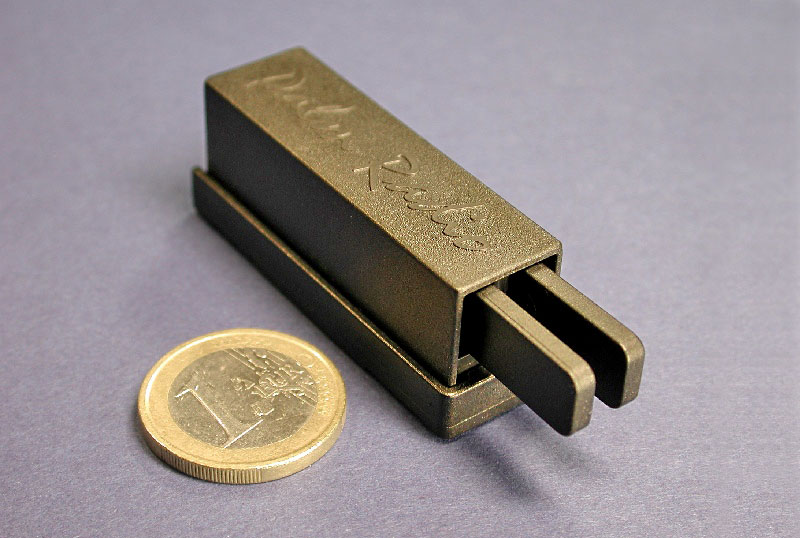
Palm Pico dual-lever paddles
It was a sad day for CW fans when German company Palm Radio announced in 2018 that it was closing.
Palm paddles are still highly prized, especially by portable operators looking for precision-made keys that are compact and light-weight. At least one manufacturer is currently making paddles that look a lot like Palm keys – I suspect the similarity is no accident. 🙂
The Palm Pico paddles (pictured) are an even smaller version of the famous Palm Mini paddles, and measure just 15mm x 15mm by 50mm and weigh a mere 14 grams.
A cool feature of these paddles is that the finger pieces retract into the body for protection, and there were mounting kits available to attach the paddles to Elecraft and Yaesu portable transceivers.
See the video later in this newsletter for more details on the Palm Pico.
* If you have an interesting key for this feature, please send me a nice clear photo and a few words describing it.
Quick notes
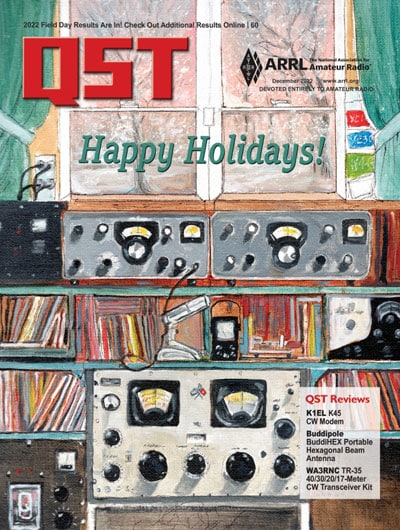 The cover of the current QST magazine caught my eye. Not only do I recognise the vintage equipment, but two of the three reviews highlighted on the cover are about CW gear. How trendy has CW become!
The cover of the current QST magazine caught my eye. Not only do I recognise the vintage equipment, but two of the three reviews highlighted on the cover are about CW gear. How trendy has CW become!
Calling frequencies: Stephen ZL1ANY suggests that we nominate a couple of frequencies as calling frequencies for stations in New Zealand and Australia who might wish to have a chat on 80 or 40 metres. May I suggest our usual net frequency of 3535 kHz? Try giving a call there – you never know who might be listening. On 40 metres, I suggest 7028 kHz which is near the top of the CW sub-bands for ZL and VK. It is also a FISTS calling frequency which may help in finding stations to work. Manny VK3DRQ and I had a nice chat there after the NZ Net a few days ago. Please let me know if you try these frequencies and make a contact!
Straight Key Night – Summer Edition will be held next weekend, from 2100 to 2200 hours NZDT Sunday 4 December on 80m. SKN is not a contest, so you won’t hear “5NN TU.” Instead, we use a longer exchange that includes type of key and type of transmitter. Get all the details.
Meet ZL4KX
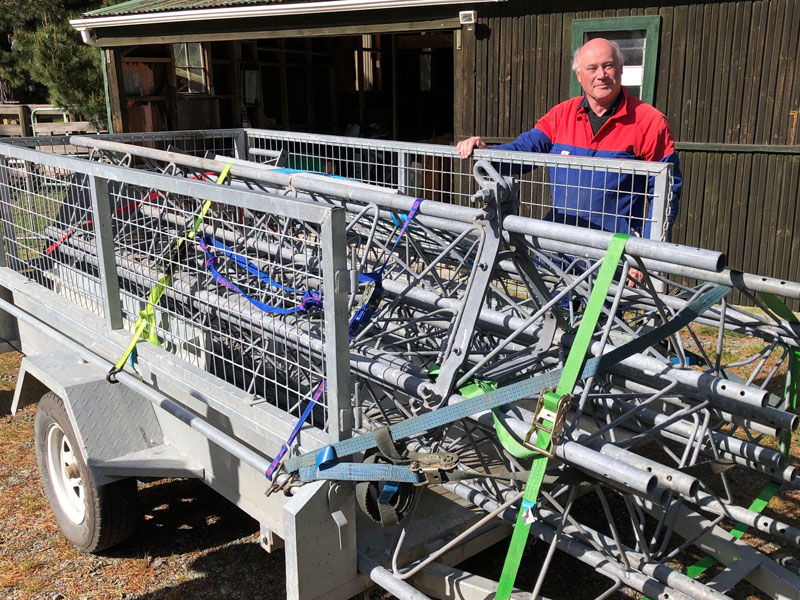
Bede ZL4KX picking up his 60-foot Rohn 55 tower in Christchurch recently. Photo: ZL2GD
By Bede ZL4KX
I became interested in radio during my early teens. One Christmas I was given a crystal set kit, made by the famous Eclipse Radio shop in Dunedin. This got me hooked on hearing signals – from nearby at least!
My father had a Bush valve radio with shortwave bands which he gave to me. He had bought it to take to Fiji when he worked there in the late 1950s. On it I could hear lots of short-wave broadcast stations and some Australian MF broadcasters. But what really interested me were the conversations I could hear on 80 metres. This was when there were still many amateur stations using AM, and they could be heard on any simple radio.
An article in the local paper about the Branch 30 Club led me to taking classes for the amateur exam. These were held every Wednesday night, for an hour, for eight months. Peter ZL4LV ran these classes for many years and he is still an active club member.
I passed my exam in 1975, when I was 14. At the time I was the youngest amateur in the country. I received a “T” call, but my interest was in HF, so when the club started morse lessons I immediately joined in. I was then very fortunate to have Jeff Howard ZL4FR offer to send me morse for 30 minutes every night. I owe him a great deal for this, and it is one of the reasons I continue to use CW.
I passed the 12wpm exam in 1976, then again in 1977 to gain a Grade 1 licence. (Things were a lot more complicated then.)
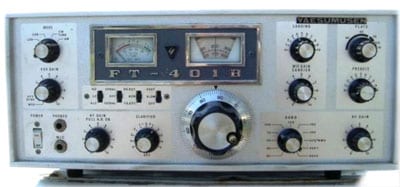 My first commercially-made rig was an FT-401, full of valves and with decent output power. This got a lot of work over the late 1970s and early 80s with the excellent sunspot peak we enjoyed then.
My first commercially-made rig was an FT-401, full of valves and with decent output power. This got a lot of work over the late 1970s and early 80s with the excellent sunspot peak we enjoyed then.
My CW contacts were made with a Post Office style manual key, but I soon saw that a keyer was needed. I built an Accukeyer, and got a Galbraith paddle from Branch 05. This paddle was upgraded when my parents bought me a Bencher paddle for my birthday in 1983. They got it in Australia when they were on holiday…things were much harder to come by then.
I started my working life with TVNZ, where many of the technical staff were licensed. Then I moved to Otago University doing electronic design-and-build for academic staff. This was followed by a number of years at Radio Spectrum Management (RSM) which was very interesting.

At Palmer Station, Antarctica in 2011
Photo: Paula Dell, Polar Trek
I was then lucky enough to be selected as the satellite engineer at Scott Base in Antarctica for the winter of 2005, so I applied for the callsign ZL5KX. This turned into a series of Antarctic jobs, so I have operated at McMurdo KC4USV and Palmer Station KC4AAC for several winters.
On my return to New Zealand I worked in Dunedin for Downer in cellular work. Currently I am with Delta Utilities, an electrical utility contractor. We do work for power supply companies on lines and associated infrastructure. My main areas are SCADA systems and maintaining linking between networks – UHF and microwave mostly.
Over my working life I have worked on equipment from MF AM broadcast up to 22GHz links, and several C-Band satellite ground stations – and I’ve been lucky to have a hobby that turned into a job.
I’m fairly active on HF (CW and SSB) and VHF/UHF SSB/CW during contests. I have plans to improve the antenna farm in anticipation of another good sunspot cycle! I have one acre, a bit out of town with few neighbours and am planning to put a Steppir 40m to 6m 3-element beam on top of my new tower. Just getting every things organised now.
Since joining NZ Net at Neil’s invitation, I have made more new friends and had some adventures. Just being involved and having the camaraderie is all I need.
Photo flashback

“Found this old photo of me in a radio room somewhere, think it might have been Gladiola, a very fast fruit carrier. From memory the gear was NERA, fully synthesised autotune TX, and similar receiver. This was back in the days when I was a freelance RO and worked mainly for Swedish-managed ships. A guy in the UK did the hiring and placing and you negotiated your daily rate directly with him.”
– Gavin ZL1BBW
CW classes afloat

Students getting their first taste of Morse Code in the floating classroom
A small group of aspiring CW operators in Rotterdam is learning the code aboard ship – the city’s namesake SS Rotterdam, a retired passenger liner which is permanently moored and used as a luxury hotel.
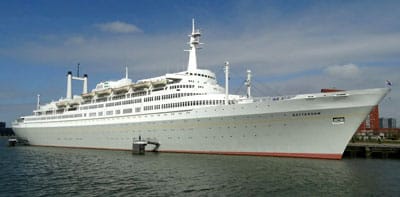 Six former Radio Officers provide the training, under the auspices of the Morse Academy, using the Koch method and Farnsworth spacing. Sending is only taught aftert the students have mastered receiving. At the end of the training, students will be able to take an exam to obtain a CW endorsement on their amateur licences.
Six former Radio Officers provide the training, under the auspices of the Morse Academy, using the Koch method and Farnsworth spacing. Sending is only taught aftert the students have mastered receiving. At the end of the training, students will be able to take an exam to obtain a CW endorsement on their amateur licences.
In addition to two classes of 10-12 beginners, there is a smaller group for advanced CW operators. Classes meet aboard Rotterdam every fortnight, but students are expected to complete 20 minutes of daily homework.
Read the full article on the Radio Officers site.
Science news from 1944

New Zealand Radiogram, 1 Aug 1944
“A new and very valuable use for high-frequency heating may result from research now being conducted for the purpose of preventing a $250,000,000 yearly stored grain loss due to insects. In the experiment the grain was passed between two electrodes and subjected to an electrostatic field of 3.5 megacycles. In 50 seconds the temperature of the grain was raised to 130°F and all four life stages of the insects were killed.”
Morse challenge
Here is a recording of the final message from coast station VIA. Your challenge is to tell me the date and time that VIA went off the air. That information is near the end of the message if you prefer not to listen to the whole thing.
For a bonus point, tell me the meaning of the 5-letter abbreviation given as the reason for closing VIA – and for that you’ll need to copy the whole message. 🙂
Send your answer via radiogram or email.
(Recording by Jack Peatfield VK5AF)
Answer to previous edition’s Morse Challenge
The Morse Code wristwatch pictured in NZ Net News 93 contained two very clear errors: the letter P and the Error Signal.
A third possible error is the so-called “Stop” signal which was shown as <AR>. That’s confusing because <AR> is the “end of message” signal. So maybe they thought “stop” and “end” were synonymous. Another interpretation is that they were referring to a “full-stop” (or “period” for North American readers), in which case the code that was given simply need one more dah on the end to become the correct <AAA>. Maybe the missing dah migrated somehow to join the P?
Good answers (citing two out of three errors at least) were received from VK3DRQ, ZL1ANY, ZL1PX, ZL2GVA and ZL3TK.
Video: Palm Pico paddles
Advertising archive
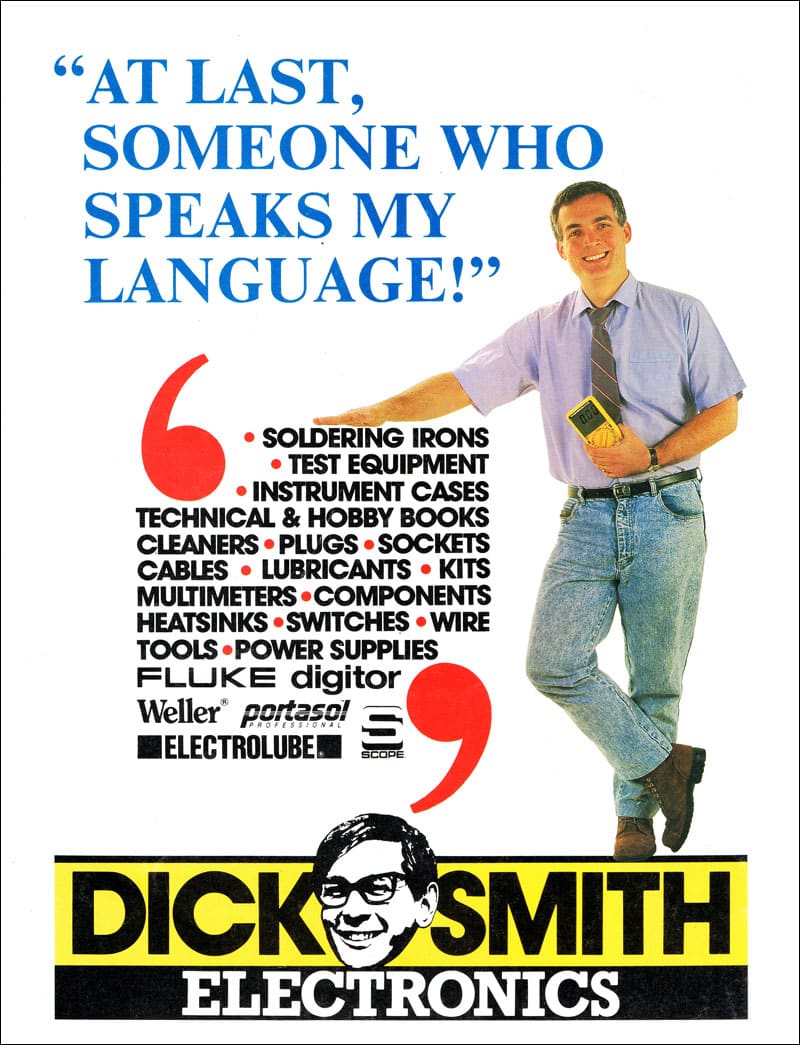
1992 advertisement for Dick Smith Electronics
Suggestions?
If you have suggestions on how to make the NZ Net better, or things you’d like to see covered in these updates, please contact ZL1NZ. You might even like to write something for the newsletter.
Thanks for reading, and I hope to hear you soon on the NZ Net!
—
Neil Sanderson ZL1NZ, Net Manager
New Zealand Net (NZ NET)
3535.0 kHz at 9pm NZT Mon-Fri




